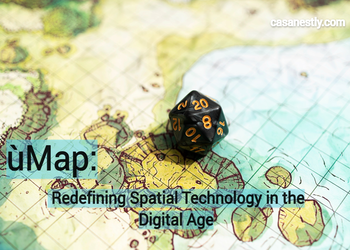Introduction
In the ever-evolving landscape of digital technology, ùmap stands as a beacon of innovation, reshaping our understanding of spatial information and navigation. This comprehensive article delves into the multifaceted facets of ùmap, exploring its evolution, features, applications, and the profound impact it has on democratizing spatial technology.
Definition of ùmap
Understanding ùmap is pivotal to unlocking its potential. At its core, ùmap is an interactive mapping tool that goes beyond traditional maps, offering real-time updates, customization options, and dynamic features.
The Evolution of Spatial Technology
Traditional maps have long been our navigational companions, but the evolution of spatial technology is rapidly transforming how we perceive and interact with geographic data. ù-map, at the forefront of this evolution, challenges conventional mapping methods, offering a dynamic and interactive experience.
Navigating the Digital Landscape
At the heart of ùmap’s appeal is its commitment to simplifying the complexities of spatial data. The platform’s user-friendly interface ensures that both tech-savvy individuals and casual users can seamlessly navigate the digital landscape. This shift towards intuitive design marks a pivotal moment in the accessibility of spatial technology.
Dynamic and Interactive Maps
Unlike static representations of traditional maps, ùmap introduces a new era of dynamic and interactive mapping. These maps go beyond the static boundaries, incorporating real-time data integration that transforms maps into living, breathing entities. Users can now engage with up-to-date information, fostering a deeper understanding of their surroundings.
User-Centric Features
A distinguishing factor for ùmap is its unwavering commitment to being user-centric. The platform offers a range of customizable layers, allowing users to tailor their maps based on specific needs. This adaptability caters to a diverse audience, whether they are planning a trip, analyzing data, or simply exploring.
Bridging the Gap with Accessibility
Accessibility lies at the core of ù-map’s mission. The platform’s straightforward design ensures that even individuals with limited technical knowledge can harness its power. By breaking down barriers, ùmap democratizes access to spatial information, transforming technology from an exclusive tool to one that serves everyone.
Unleashing the Power of Customization
Customization is a key strength of ùmap, allowing users to mold their maps according to specific requirements. From adjusting layers to highlighting particular data points, ùmap provides a level of flexibility that enhances its utility across various scenarios. This adaptability positions ùmap as a tool that caters to the diverse needs of its users.
Real-World Applications
Beyond its user-friendly interface and dynamic features, ùmap finds applications in a myriad of real-world scenarios. Urban planning benefits from its data visualization capabilities, environmental monitoring leverages its dynamic mapping, and educational institutions use ùmap to provide interactive learning experiences.
The Technical Landscape
Delving into the technical aspects, ùmap employs cutting-edge technologies such as GIS (Geographic Information System) to provide accurate and detailed spatial information. Its integration with APIs (Application Programming Interfaces) enhances its functionality, allowing for seamless interaction with various data sources.
FAQs
Q1: How does ùmap utilize GIS technology in its platform?
A1: ùmap leverages GIS technology to collect, analyze, and interpret spatial data. This enables the creation of detailed and accurate maps, enhancing the overall user experience.
Q2: Can ùmap integrate with other applications through APIs?
A2: Absolutely. ùmap’s compatibility with APIs allows for seamless integration with other applications, facilitating a broader spectrum of data interaction and usage.
Q3: What industries can benefit most from ùmap’s real-time data integration?
A3: Industries such as logistics, emergency services, and environmental monitoring benefit significantly from ù-map’s real-time data integration, allowing for quicker decision-making and response.
Q4: How does ùmap ensure data security and privacy?
A4: ùmap employs robust security measures to protect user data, ensuring privacy and compliance with data protection regulations.
The Community Impact
Ùmap extends its influence beyond individual users and professionals, impacting communities at large. Local governments utilize ùmap for urban planning, disaster management, and public services, illustrating its role as a tool that contributes to the well-being of societies.
Global Collaborations and Partnerships
Ùmap’s success is amplified by collaborations and partnerships with global organizations. The platform’s integration into various sectors showcases a commitment to creating a network of interconnected spatial data that transcends geographical boundaries.
The Future of Spatial Technology
As we journey further into the digital age, ùmap stands as a harbinger of the future of spatial technology. Its continuous evolution, adaptability, and commitment to simplicity position it as a trailblazer in shaping how we navigate and interact with our world.
Conclusion
In conclusion, ùmap’s significance extends beyond being a technological advancement; it is a narrative of empowerment, accessibility, and community impact. By redefining spatial technology in the digital age, ù-map ensures that the benefits of navigating our world are not exclusive but are accessible to everyone. With unleashed potential, ù-map promises to transform the way we perceive and engage with spatial information, making it an indispensable tool for individuals, communities, and organizations worldwide.
